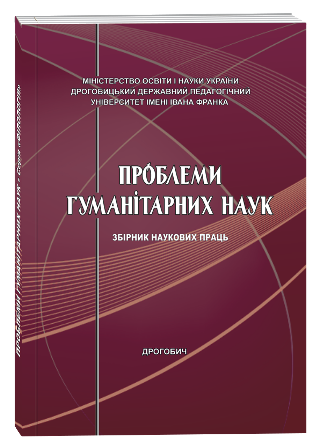GENDER (IN)EQUALITY IN WOMAN’S FANTASY BY OLHA HROMYKO “YEAR OF THE RAT”
DOI:
https://doi.org/10.24919/2522-4565.2022.49.10Keywords:
female fantasy, gender roles and functions, male image, female image, woman-forman.Abstract
In the article, the author tries to deconstruct gender stereotypical roles and functions of the key characters of the fantasy humorous novel-dilogy «The Year of the Rat» by O. Gromyko. The novel is considered a model of female fantasy, so it belongs to mass culture, today patriarchal in nature, and it is a female text, one that implements the female value paradigm in male culture. That is why application of the elements of female studies as a method to analyze the dilogy is justified. The main character Ryska is a typical image of fantasy novel in general: she has certain magical abilities, has a dramatic background of rejection and injustice, that motivates her to seek herself, and in this way she overcomes evil. At the same time, Ryska is interpreted as a stereotypical female image in mass literature, in particular in the one, based on the development of love discourse. This means that it has a certain set of characteristics; the key one is that a girl / woman is not a value in herself, but as a girl / woman-for-a-man. The male character of the dilogy novel Alk, like Ryska, is a typical fantasy image and at the same time embodies the key characteristics of an exemplary – real man: he is strong physically and spiritually (able to defend and attack), occupies a high social position, is intelligent, powerful and charismatic. It is Alk who becomes the core element that unfolds the fantasy plot, reveals or even changes Ryska’s character – takes a dominant position on the female character: directs her actions, determines her next steps, while protecting and preserving her. The implementation of gender stereotypes, typical gender roles and functions in the texts of mass culture, including in today’s popular fantasy genre, contributes to their consolidation in the mass consciousness as normative for men and women. This can contribute to the spread of gender stereotypes in society, has generally negative consequences for the gender identification of the readers.
References
Біблія, або Книги Святого Письма Старого й Нового Заповіту / пер. проф. І. Огієнка. Українське біблійне товариство, 2003. 1375 с. Бовуар С. де. Второй пол. URL: http://loveread.ec/read_book.php?id=64649&p=1.
Годунок З. В. Проблема ідентичності Іншої в гумористично-фентезійних романах О. Громико. Актуальні питання гуманітарних наук : міжвуз. зб. наук. праць молодих вчених Дрогобицького державного педагогічного університету ім. Івана Франка.
Дрогобич, 2018. Вип. 19. С. 75–80.
Громыко О. Год крысы. Видунья. Москва : АРМАДА & «Издательство АЛЬФА-КНИГА», 2009. 344 с. Громыко О. Год крысы. Путница. Москва : АРМАДА & «Издательство АЛЬФА-КНИГА», 2010. 506 с.
Перес К. К. Невидимые женщины. Почему мы живем в мире, удобном только для мужчин. Неравноправие, основанное на данных. Москва : Альпина Паблишер, 2020. 496 с.



